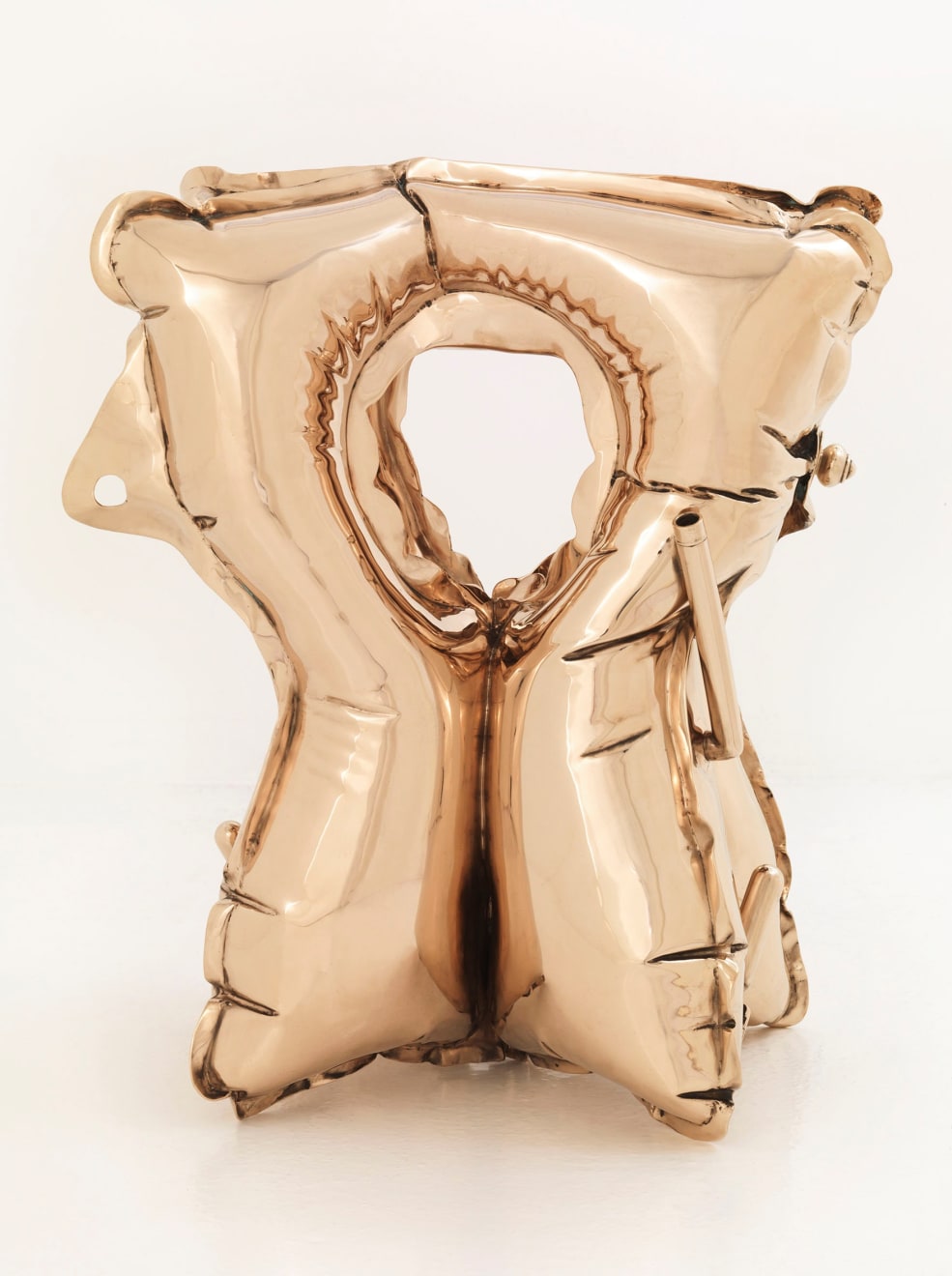Angela Palmer b. 1957
Lifejacket, 2015
Mirror polished bronze
52 x 49 x 30 cm
20 1/2 x 19 1/4 x 11 3/4 in
20 1/2 x 19 1/4 x 11 3/4 in
Edition 1 of 6
Copyright The Artist
Currency:
Further images
This fabulous highly polished bronze sculpture of a life jacket recently became the lead image for a Choose Love charity campaign and perfectly captures the ideals of hope and survival....
This fabulous highly polished bronze sculpture of a life jacket recently became the lead image for a Choose Love charity campaign and perfectly captures the ideals of hope and survival. However it also comments on the life and death challenges facing those who are forced to flee their homes.
Palmer's subjects are wide ranging – from her work with Egyptian mummies, first seen in her 2011 exhibition 'Unwrapped: The Story of a Child Mummy', to her 2018 portrait of 'Eclipse', the undefeated Georgian racehorse sired in the bloodline of an estimated 95% of modern racehorses.
Palmer's technical ability is broad: the artist is as at-home working with American black walnut or 3 billion year old stone as she is in polished bronze. Palmer's signature technique is, however, something wholly her own. Utilising modern imaging technology, Palmer reveals the internal topographies of her subjects a process which she refers to as 'mapping'. This process often requires expert knowledge which often leads to collaborations with top academics in their fields.
Palmer's subjects are wide ranging – from her work with Egyptian mummies, first seen in her 2011 exhibition 'Unwrapped: The Story of a Child Mummy', to her 2018 portrait of 'Eclipse', the undefeated Georgian racehorse sired in the bloodline of an estimated 95% of modern racehorses.
Palmer's technical ability is broad: the artist is as at-home working with American black walnut or 3 billion year old stone as she is in polished bronze. Palmer's signature technique is, however, something wholly her own. Utilising modern imaging technology, Palmer reveals the internal topographies of her subjects a process which she refers to as 'mapping'. This process often requires expert knowledge which often leads to collaborations with top academics in their fields.











